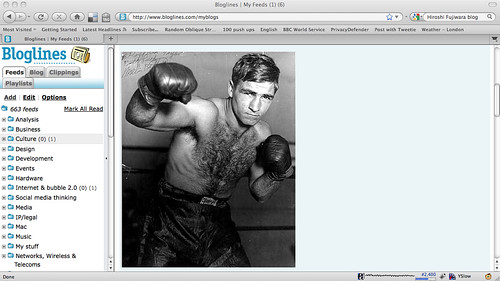ZFS on Linux
Slashdot Linux Story | Native ZFS Is Coming To Linux Next Month – this is an interesting move having ZFS on Linux, hopefully ZFS will go mainstream across all OS. ZFS on Linux allows a more efficient usage of storage since existing file systems were designed for disk sizes orders of magnitude smaller than present sizes. The cloud needs this because at some point the data needs to be addressed at disk-level, but it will also be handy to have enterprise level file systems. ZFS on Linux still isn’t a rival to native ZFS on Solaris
China
In China, Social Evenings Are Considered Part of the Business Routine – NYTimes.com
FT.com / China – China’s growth model ‘unsustainable’ (pay wall) – rising social tensions, choking pollution, a lack of public services and an over-reliance on exports and investment, particularly in real estate cited as challenges to the country’s economic future in China Daily op-ed
Design
Are designers less valuable than we think? | material world – FT.com – interesting research from INSEAD
Vintage recorders (Vintage Reel to reel tape recorder collection, Sales, duplication and repairs ) – beautiful looking machines
Economics
Countries See Hazards in Free Flow of Capital – NYTimes.com – restrictions being put in place on flow of capital
FMCG
The Atlantic Turns a Profit, With an Eye on the Web – NYTimes.com – really interesting article on The Atlantic
FT.com – Chinese tipple set to head west – interesting move
Cigarette Giants in a Global Fight on Tighter Rules – NYTimes.com – if these measures are implemented, reducing the ‘brand totem’ of the cigarette packet, will it instead bring in white label brands and roll-your-own tabacco? Are some of the countries implementing this for health reasons or business reasons?
Japan
Japan No Longer Home For Panasonic? – WSJ – the flip side of this is will quality slip as they try and out fox the Chinese?
Legal
Wikileaks cables reveal that the US wrote Spain’s proposed copyright law – Boing Boing – interesting comfirmation of what many countries suspect about their IP laws. Expect a backlash
Met closes down anti-police blog | The Guardian – this sets an interesting precedent. Didn’t seem to be anything in the advice that someone watching CSI wouldn’t know?
The EU’s Digital Economy Gets Ready for a Makeover – WSJ.com – The EU has a “copyright system that has done the job for 200 years and been quite successful. But that was when there were separate countries fighting it out on battlefields,” she said. “Once we have a solution for copyright, then it will be easier to attack piracy. If you solve the real problem, then there will be less piracy.”
Media
The Dave Matthews Band shows how to make money in the music industry. – By Annie Lowrey – Slate Magazine – similar model to the Grateful Dead back in the day
Online
Twitter Is Now Worth About As Much As The New York Times – is Twitter really worth 1.6 billion USD?
Why AOL and Yahoo Really Have to Worry about Facebook – Deal Journal – WSJ – in their market eating up all the display advertising business
Retailing
Luxury Retailers Open Shop on the Chinese Internet – WSJ.com – interesting article on the development of online experiences in the luxury sector, ideal for breaking into tier 2 & 3 cities
How Stores Lead You to Spend – WSJ.com – the psychology that goes into store design has always fascinated me
Security
Judging the cyber war terrorist threat : The New Yorker – good overview on the issues around cyber-espionage and cyber-warfare that is steering western policy by Seymour Hersh
Schneier on Security: The DHS is Getting Rid of the Color-Coded Terrorism Alert System – doesn’t work from a consumer behaviour point of view
F.B.I. Seeks Wider Wiretap Law for Web – NYTimes.com – so the trick would be to use services not aimed at US consumers to hide in? Either that or it could go for a ‘great firewall’-type solution to only allow US nationals to use US services
Technology
I, Cringely » And Then Along Comes Larry…. – Cringely on Oracle
Salesforce Turns Microsoft Stunt to Own Advantage – Digits – WSJ – great bit of competitor de-positioning against Microsoft
